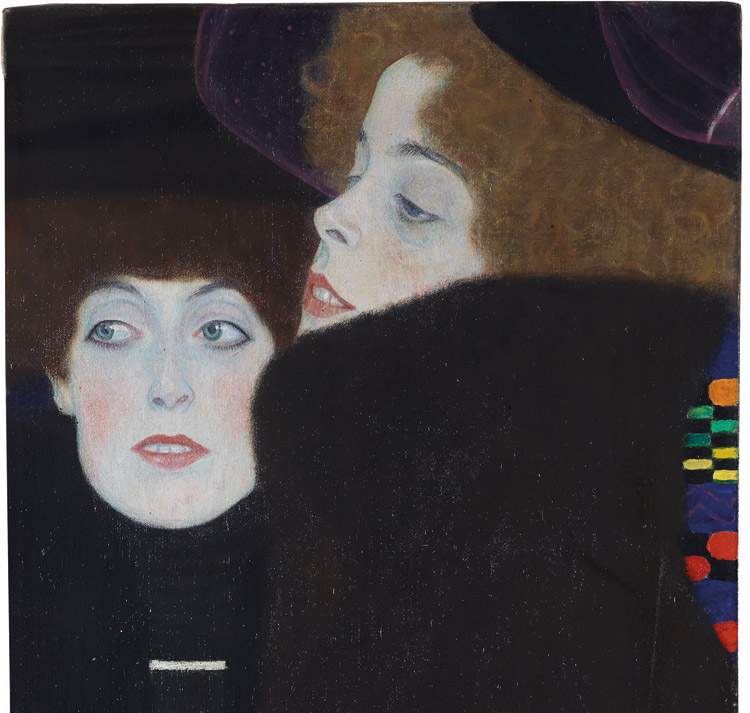Klimt, Schiele and European Secessions on show together for the first time in Rovigo
One of next fall’s top events is coming to Rovigo, at the Palazzo Roverella: in fact, masterpieces of the European secessions of the early 20th century will arrive in the Venetian city for the exhibition Secession. Munich, Vienna, Prague, Rome. The Wave of Modernity, scheduled from September 23, 2017 to January 21, 2018: this is the first time an exhibition is dedicated to the four major secessions that took place, between the late 19th and early 20th centuries, in the four European cities included in the title (others would have arisen in other cities, especially in the east: Budapest, Warsaw, Belgrade, Zagreb... ). The exhibition, curated by Francesco Parisi, aims to highlight affinities and differences between these different experiences destined to indelibly mark the fate of world art, and which bore the name “secessions” because the artists who took part in them intended to separate themselves from official, traditional art.
The exhibition itinerary will be developed in four thematic sections, each dedicated to a different secession. A chronological order is followed and it starts with the Munich Secession (1892), where the Jugendstil (named after the magazine Jugend, literally “Youth”) was born, which contributed decisively to the birth ofArt Nouveau. A number of artists adhered to the Jugendstil, including Franz von Stuck (on display will be his famous Lucifer along with the preparatory sketch), Ludwig von Hofmann (featured with the work Zwei Jünglinge, “Two Young Men”), Carl Strathmann (whose Maria the exhibition showcases) and Thomas Theodor Heine (among the works the Rovigo exhibition presents are Flowers of Evil): the exhibition traces the birth and development of this movement, with a core of works from 1898 to 1910.
Then we come to the decisive Vienna Secession, which began in 1897 and was probably even more radical than the Munich Secession: the movement, which extended to the point where its influence was felt in the Slavic area and in the Italian area and which developed on the impetus of the Hungarian writer Lajos Hevesi (or Ludwig Hevesi) and the great painter Gustav Klimt, is represented in the exhibition by works by Klimt himself (there will be paintings such as Friends I and Lady with a Hat on a Red Background, but also graphic works), Egon Schiele (present with the Manifesto for the 49th Viennese Secession exhibition), Josef Maria Auchentaller (with the Portrait of Emma among other works), Koloman Moser, Carlo Otto Czeschka.
Less well known, perhaps, is the Prague Secession, which began in the 1890s with several groups of modernist artists who turned away from the traditional culture of their country of origin: one of these was the Manes group, which originated in Munich but later moved to Prague, and then one must count the Sursum group, which included artists such as Josef Váchal, Frantisek Kobliha, Jan Konupek, Jaroslav Horejc and others. The Prague artists devoted themselves mainly to drawing and engraving: a third of the section devoted to the Prague Secession will thus consist of graphic art.
Finally, we come to the Rome Secession, active between 1913 and 1916, which wanted to distinguish itself from Futurism but at the same time open up to an international dimension (as part of the First International Art Exhibition of the Secession, the Italian public was able to admire works by many post-Impressionists) without completely abandoning areas of research more in keeping with traditional taste. The exhibition will feature artists such as Felice Casorati (with Ada), Plinio Nomellini (with a portrait of Grazia Deledda), Enrico Lionne (with one of his Nudes), Aleardo Terzi (there will be one of his Meriggio d’autunno) and Giuseppe Biasi (with Mattino in a Sardinian village).
“The Secessions,” the curator writes in his introductory text, "constituted a necessary premise, the breeding ground for new ferments, both of the figurative line, albeit with the intricate and deformed paths of the sign, and for developments in the non-figurative sense, one thinks of Wassily Kandinsky in von Stuck’s Munich. The young people who joined the Secessions, or who exhibited at the annual shows, were, in fact, calling for more attention to innovative expressions, testifying peremptorily to the futility of schools and the teaching of art: artists are born not made."
The exhibition is promoted by Fondazione Cassa di Risparmio di Padova e Rovigo in collaboration with Comune di Rovigo and Accademia dei Concordi. Production: Silvana Editoriale. Main sponsors: Intesa Sanpaolo and Cassa di Risparmio del Veneto. Info at www.palazzoroverella.com.
Image: Gustav Klimt, Amiche I, detail (1907; Vienna, Klimt Foundation)
 |
| Klimt, Schiele and European Secessions on show together for the first time in Rovigo |
Warning: the translation into English of the original Italian article was created using automatic tools. We undertake to review all articles, but we do not guarantee the total absence of inaccuracies in the translation due to the program. You can find the original by clicking on the ITA button. If you find any mistake,please contact us.





























